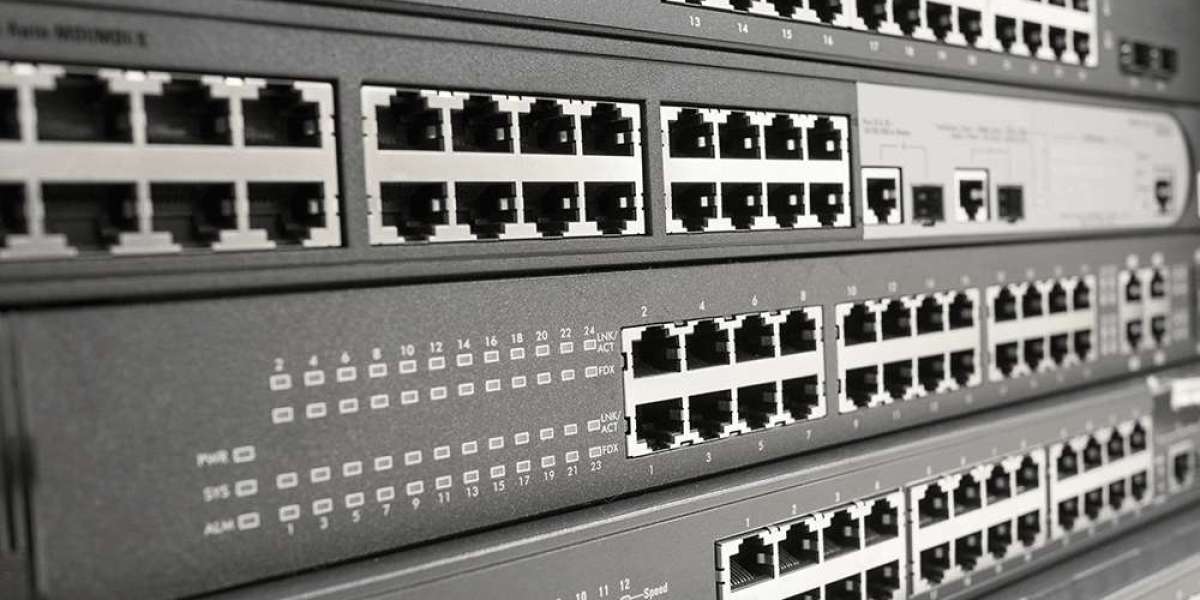In the fast-evolving world of technology, the backbone of any robust IT infrastructure is its network. With businesses relying heavily on seamless connectivity, network switches play a pivotal role in enabling efficient communication, data transfer, and overall productivity. As companies gear up for the future, understanding the role of network switches becomes essential to building a future-ready IT environment.
What Are Network Switches?
Network switches are hardware devices that facilitate communication between devices on a local area network (LAN). They operate at the data link layer (Layer 2) or the network layer (Layer 3) of the OSI model, directing data packets between connected devices such as computers, servers, and printers. Unlike hubs, which broadcast data to all connected devices, switches intelligently forward data to specific devices based on their MAC or IP addresses, ensuring efficient and secure communication.
The Evolution of Network Switches
As businesses grow and adapt to changing technological demands, the role of network switches has evolved significantly. Initially designed for basic data forwarding, modern switches now support advanced functionalities such as:
High-Speed Data Transmission: Gigabit and 10-Gigabit Ethernet switches cater to the growing demand for faster data transfer rates.
Power over Ethernet (PoE): Many switches now provide power to connected devices such as IP phones, cameras, and wireless access points through Ethernet cables.
Virtual LANs (VLANs): VLAN capabilities enable network segmentation, improving security and efficiency.
Layer 3 Switching: Advanced switches offer routing capabilities, allowing them to handle traffic between different subnets.
Software-Defined Networking (SDN): SDN-enabled switches facilitate centralized network management, offering scalability and flexibility.
Why Network Switches Are Crucial for a Future-Ready IT Infrastructure
1. Scalability
As organizations expand, their IT infrastructure must scale to accommodate increased traffic and new devices. Network switches like the WS-C3850-12S-E, offered by BulkDevices, provide modular designs and stackable options, enabling businesses to add capacity without overhauling the entire network.
2. Enhanced Security
Modern network switches come with built-in security features to safeguard sensitive data. These include Access Control Lists (ACLs), 802.1X authentication, and encryption protocols. With cyber threats on the rise, having switches that integrate security measures is non-negotiable.
3. Support for IoT and Edge Computing
The Internet of Things (IoT) and edge computing are transforming the way data is processed and transmitted. Future-ready switches must support the massive influx of IoT devices and the low-latency requirements of edge computing applications. Features like PoE and advanced QoS (Quality of Service) settings are critical in this regard.
4. Energy Efficiency
Energy-efficient switches reduce operational costs and environmental impact. Features such as Energy Efficient Ethernet (EEE) and intelligent power management optimize energy consumption, making them an ideal choice for sustainable IT infrastructure.
5. Cloud Integration and Virtualization
With the proliferation of cloud computing and virtualized environments, network switches must seamlessly integrate with cloud platforms and support virtual networks. SDN and APIs in modern switches simplify these integrations, enabling businesses to adopt hybrid or multi-cloud strategies.
6. Reliability and Redundancy
Downtime can be catastrophic for any organization. Future-ready switches offer features like link aggregation, redundant power supplies, and failover mechanisms to ensure high availability and uninterrupted network performance.
Best Practices for Deploying Network Switches
Assess Current and Future Needs: Evaluate your current network traffic, device count, and future growth projections to select the right switch model.
Invest in Quality Hardware: Choose switches from reputable brands, such as BulkDevices, that offer reliable and scalable solutions.
Implement Proper Configuration: Configure VLANs, QoS, and security protocols to optimize network performance and protect data.
Regular Maintenance and Updates: Keep firmware and software up to date to benefit from the latest features and security patches.
Plan for Redundancy: Incorporate failover mechanisms and redundant pathways to minimize downtime.
Conclusion
In today’s digital landscape, network switches are the unsung heroes of IT infrastructure. They ensure that data flows smoothly, securely, and efficiently across the network, supporting both current operations and future growth. As organizations prepare for emerging technologies like IoT, cloud computing, and edge computing, investing in advanced switches like the WS-C3850-12S-E from BulkDevices is a step towards building a resilient, future-ready IT ecosystem.
By understanding the critical role of network switches and implementing best practices, businesses can create an infrastructure that not only meets today’s demands but also adapts seamlessly to the challenges of tomorrow.



